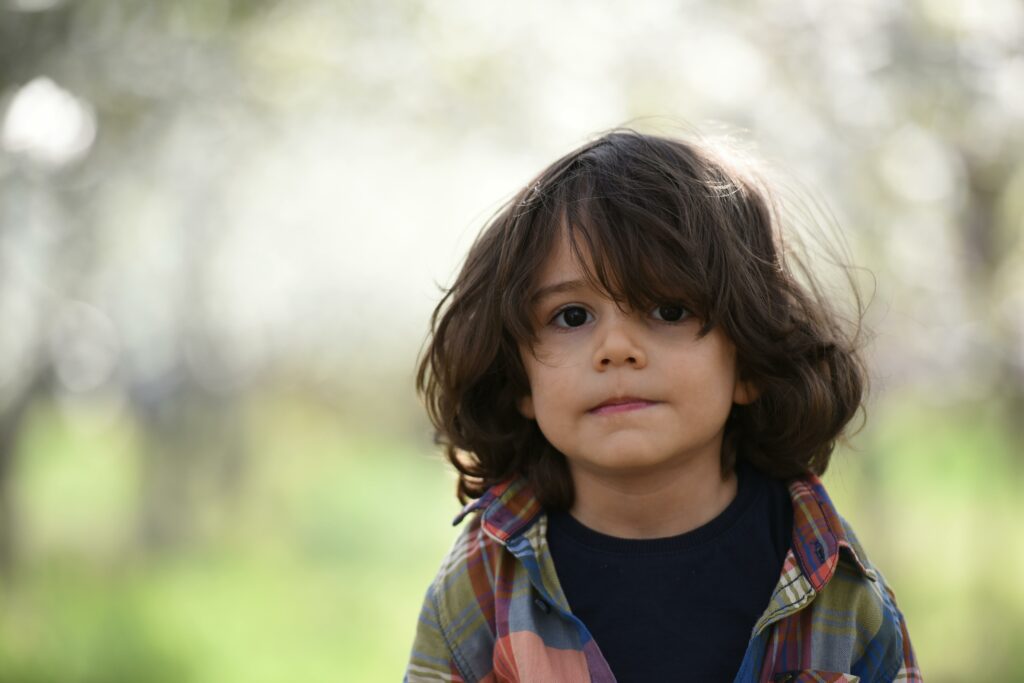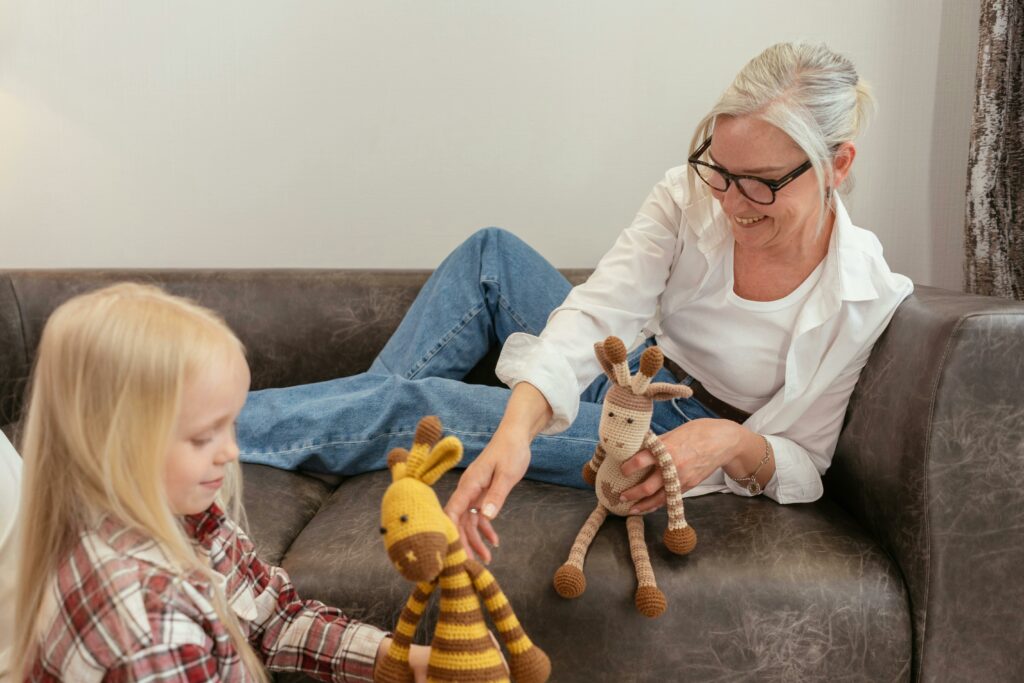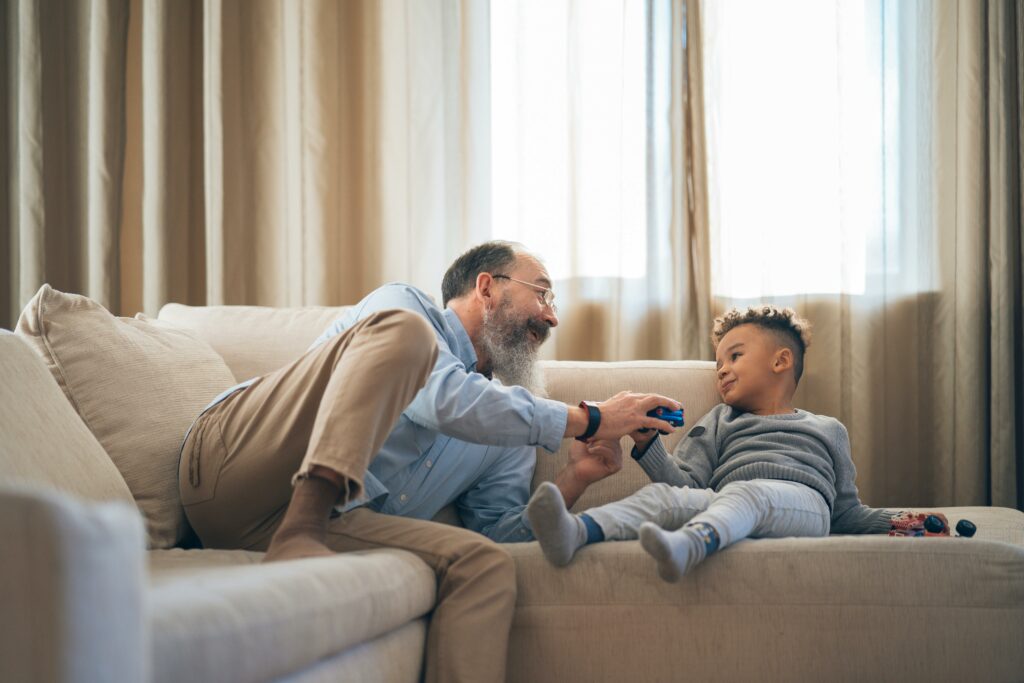Loss is not always about death. It can be as simple—and as significant—as a toddler losing a beloved stuffed animal or a child moving away from familiar friends and routines. For families, especially those navigating neurodiversity, these everyday transitions present unique emotional challenges and opportunities for growth.
Understanding and supporting our children through these moments can feel daunting, but with the right approach, they become powerful tools for teaching resilience, empathy, and emotional intelligence.

Redefining Loss in Childhood
We often associate loss with the death of a loved one. But children experience loss in many forms:
- A grandparent with dementia who no longer recognizes them
- Moving to a new home or school
- Living between two households due to separation or divorce
- Losing a favorite toy or comfort item
- Outgrowing cherished objects like pacifiers or sippy cups
Even moments that seem small to adults can feel deeply significant to a child. A lost “pink foxy” or favorite blanket might be their first encounter with grief. These experiences are opportunities to introduce the concept of loss early, gently, and in a way that empowers children to begin developing coping tools.

How Neurodiverse Children Experience Loss
For neurodivergent children, navigating emotions around loss can come with added complexity. Sensory sensitivities, communication styles, or rigid routines can intensify the impact of change or absence. While some parents may feel hesitant to talk about heavy topics like death or separation, avoiding them can lead to confusion and anxiety.
Instead, it’s essential to meet children where they are—using direct, compassionate language and clear explanations. One child may not fear death, but might struggle with unpredictability or not understanding where someone has gone. Another may find comfort in visual supports or storytelling. What matters is initiating open, ongoing conversations that normalize change and transition.
Starting the Conversation Early
Loss is part of life’s “circle”—an experience we all share. That’s why it’s never too early to begin teaching children how to process it. Here are some age-appropriate strategies:
- For toddlers and young children: Use everyday moments (like a missing toy or moving house) to model emotional awareness. Let them know it’s okay to feel sad or frustrated, and guide them through the process of letting go.
- For older children: Encourage reflection. Ask what they remember about someone or something they’ve lost. What did they love most? What do they miss? What would they say to them now?
- Be honest, not heavy: Explaining concepts like death or separation doesn’t require ominous tones. Use metaphors like the “circle of life,” or simple phrases like “they’re not with us anymore, but we’ll always have the memories.”

From Pacifiers to Coping Skills
One thought-provoking idea is the difference between pacifying and coping. While a pacifier may soothe temporarily, it doesn’t teach a child how to manage big feelings. But a parent teaching sign language to a one-year-old to help them express emotions? That’s the beginning of a lifelong skill.
Even tantrums—yelling or screaming—can be understood as attempts at coping. The key is helping children learn more effective, respectful ways to handle their emotions. It starts with acknowledging those feelings and modeling healthy responses.
Building Resilience Through Memory and Meaning
Rather than focus only on what’s been lost, families can shift the lens toward what remains:
- Cherished memories
- Photos and stories
- Life lessons from the person or object that’s gone
- New experiences and opportunities that come after the change
Grief and sadness are natural. But staying in those emotions indefinitely can become unhealthy. Instead, we can teach our children to hold space for their sadness, while also embracing joy, love, and laughter—even during times of loss.

Practical Tips for Families
Here are some takeaways to help your family navigate loss with resilience:
- Start early: Use simple, everyday experiences to introduce the idea of loss.
- Be direct and age-appropriate: Honest conversations help build trust and understanding.
- Validate emotions: It’s okay to feel sad or confused. Name the emotion and talk through it.
- Celebrate what was: Focus on the joy, love, or meaning behind the loss.
- Model healthy coping: Show your child that it’s okay to cry, to talk, to laugh, and to remember.
- Educate your circle: Help others—like extended family or educators—understand how your child processes emotions, especially if they are neurodivergent.
Moving Forward Together
Loss is part of the journey. While we can’t shield our children from it, we can guide them through it—with honesty, compassion, and a focus on growth. Whether it’s a toy, a pet, a friend who moved away, or a grandparent who passed, every experience is a chance to teach resilience, build connection, and deepen emotional strength.
You don’t have to have all the answers. You just have to show up, stay open, and lead with love.
Resources for Further Exploration
Internal Links:
- Pam and The Purple Couch Podcast – Understanding Grief: Navigating Loss & Neurodiversity in Families
→ How families can help children, especially neurodivergent ones, understand and cope with loss—whether it’s the death of a loved one or everyday challenges like changing schools or losing a favorite toy. - Meet Pamela
→ Learn how Pamela’s journey as a parent led her to create transformative spaces for neurodivergent learners. - Services
→ Access information on coaching, training, and workshops designed to empower parents and educators. - 5 Practical Tips to Rewire Your Parenting Mindset
→ A practical guide to shifting your mindset so you can parent with greater calm, connection, and confidence - MindMeld Community
→ A members-only community offering expert-led Q&As, resources, and networking opportunities for educators and caregivers.
External Links:
- Child Mind Institute: Helping Children Deal With Grief
→ Practical strategies to help children process and cope with grief. - Sesame Street in Communities – Grief Toolkit
→ A gentle, age-appropriate guide for helping very young children deal with grief and big emotions. - Autism Speaks – Helping Children With Autism Understand Death and Grief –
→ Specific guidance for helping autistic children navigate the concept of loss. - Understood.org – Helping Neurodivergent Kids Handle Transitions and Loss
→ Resources for understanding emotional processing in children with ADHD, autism, and learning differences. - The Intersection between Grief and Neurodivergence
→ Learn how neurodivergent individuals experience grief and how to support them through loss with understanding and compassion.

